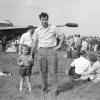Search the Community
Showing results for tags 'us navy'.
-
Hello guys, it's been a while since I posted in the forum. Here's a photo of my latest model, Trumpeter's F9F-2 Panther in Argentinian colours. I used an Aerocalcas set, 48005, to get these markings
- 9 replies
-
- 24
-

-
- F9f panther
- Argentina
-
(and 1 more)
Tagged with:
-

VideoAviation USN Deck Crew Set (201748) 1:48
Mike posted a topic in Aftermarket (updates/conversions)
USN Deck Crew Set (201748) 1:48 VideoAviation They say being a deck operator on an Aircraft Carrier is one of the most dangerous jobs in the world, which is believable, given that there are large chunks of jet and prop-powered metal weighing several tons moving around, getting flung into the air and landing back on. This set of resin figures from VideoAviation contains parts for seven of these folks plus a number of chocks and holdbacks. It arrives in one of their familiar large clamshell boxes with a layer of bubble-wrap surrounding everything but the cover card. Inside are eleven casting blocks, with one each for the figures and four for the accessories. There are a few wisps of resin here and there where the parts have come out of the mould, but these can be removed so easily it barely merits mention. The figures have heads, legs and torsos moulded as a single part, with one or both arms as separate parts where practical, and only one of the flight line crew being moulded with both arms attached held behind his back, and Shooter 1 giving the thumbs up with his other hand on his thigh. There are figures representative of Chocks, Holdbacks, Shooter 1, Shooter 2, Fly Director, and two Flight Line Crew in different poses. The instructions show the figures fully built with colour call-outs to their clothing, bone domes and equipment, plus a simple guide to assembling the Chocks from five parts, allowing you to vary the distance between the two highly textured stoppers. Very little clean-up will be needed once the parts are liberated from their casting blocks, with a few swipes of the sanding sticks to ensure the figures can stand up unaided. Even the kneeling figures have small attachment points at the knee and toes to prevent a big flat-spot or seamline down the leg, so care has been taken to make the job easier for us, which is always appreciated. Conclusion If you’re looking to populate a diorama or just have some figures next to your model, the detail is excellent, and as you get 7 crew in the pack they’re great value. Review sample courtesy of -
Hello! Here’s my recent project, an Eduard (Profipack) Hellcat F6F-5 Late. It means PE, canopy masks and resin wheels included, which is great. Everything went fine, this is a very good kit. Even after I dropped some varnish all over the right wing. So, ALWAYS put the airbrush cup lid ON! Lesson learned… Hope you enjoy! Cheers!
- 17 replies
-
- 42
-

-
The Grumman F6F Hellcat – Airframe & Miniature #15 ISBN: 9781912932115 Valiant Wings Publishing The Book The book is perfect-bound with 224 pages on glossy paper, tons of photographs, diagrams and profiles, the modern pictures being in colour, while the contemporary content is going to be black and white due to that being the predominant film format of the day. It is of course written by Richard A Franks, with profiles by Richard J Caruana, isometric drawings by Wojciech Sankowski and models by a group of fine modellers. If you're familiar with the series, you'll know that the pages are broken down into the Airframe section that deals with the 1:1 real thing, and the miniature section that covers the scale models and has a number of builds, plus a host of photographic detail that will be of great help to the modeller. The breakdown in more detail is as follows: Airframe Chapters 1. Protoypes 2. Production 3. Reconnaissance, Night-Fighters, Drones, Test Airframes & Projects 4. Camouflage & Markings and Colour Profiles Miniature Chapters 5. Hellcat Kits 6. Building a Selection 7. Building a Collection 8. In Detail: The Hellcat Engine, Cowlings & Propeller Cockpit & Canopy Mid & Aft Fuselage Tail Wings & Control Surfaces Undercarriage & Arrestor Hook Armament Electrical Equipment Appendices I. Hellcat Kits II. Hellcat Accessories III. Hellcat Decals & Masks IV. Bibliography A concertina sheets of 1:48 Scale plans captive in the rear cover (equivalent to 8 pages printed on both sides) The scale plans are nicely thought out, and fold out sideways with the left-hand edge captive to the inside cover, and the isometric drawings by Wojciech Sankowski that pick out the differences between variants and sub-variants are a dream for anyone like me that struggles to remember the details that separate the marks. As usual with the photographs in these titles, they're excellent for the most part, and as good as they can be for the occasional slightly grainy one that is all that remains of this or that variant. Afterall, there's only so much that modern photo editing software can do. The builds by Libor Jekl, John Wilkes and Steve A. Evans are all first-rate too, with two in 1:72, one in 1:48, one in 1:32 and one of the immense 1:24 Airfix kit, all of which wouldn't look out of place on competition tables at the highest level. Conclusion This book is brimming with interest and information, with something for everyone – the modeller, the aviation enthusiast or history buff. My personal favourite parts are the variant isometrics as previously mentioned, but there is so much to enjoy and it’s all good. Very highly recommended. Review sample courtesy of
-
Another kit finished that was on the shelf-of-doom. In fact it turned out better than I expected. Paints were acrylics, Humbrol Light Gull Grey and Tamiya XF-2 White finished with the kit decals and a Flory wash then sealed with a matt sheen from Vallejo. I also made some airbags for the intakes from Milliput, made a mould and cast some resin ones. Thank you for looking. Regards Robert
-
Time to start another Navy build. I'd been planning on a Skyhawk next (I should still get to that) but somehow the inspiration to build the unique EC-24A struck me. Here's the 1/1 scale version: The EC-24A was operated by McDonnell Douglas for the Fleet Electronic Warfare Support Group as an electronic aggressor - its role was to simulate attacks on the US Navy surface fleet. It was converted from a DC-8-54CF acquired from United Airlines in 1984, supplementing two NKC-135As in the same role. I'll be using the Minicraft 1/144 DC-8 kit, which includes suitable engines for a CFM-56 powered 70-series aircraft or for a DC-8-62 or -63 with the later style of nacelle for the JT3Ds, but not the earlier JT3D nacelle of the -50 series. So I'm using resin engines from Bra.Z. The various fairings and antennae will be scratch built, including some 3D printing, and I'll print my own decals. Here are the sprue and resin engines: First job is to shorten the fuselage. Minicraft kindly give us engraved lines inside the fuselage halves to guide the necessary cuts so this was pretty straightforward: and it's gone together quite nicely, with some scrap sprue used to reinforce the joints: So, off to a good start. I'm hoping to move it along quite quickly so as to get time for that Skyhawk. cheers Julian
- 48 replies
-
- 8
-

-
- 1/144
- Minicraft DC-8
-
(and 1 more)
Tagged with:
-
My next lockdown model is now officially finished I used the Eduard photo-etched set, together with metal gear from Scale Aircraft Conversion [SAC-72106]. I must admit some of the parts were particularly fiddly like the arresting hook and the bits and pieces for the landing gear (as shown by the close-up shots). For the high visibility markings I used MM Semigloss Orange #1595. Overall, I am really satisfied how it turned out. Enjoy!
-
Hello, This my recent project, OOB. A really easy kit, nice fitting and engineering. The only, and big, complain are the decals. They’re virtually useless, way too thick. So, I put it on hold and waited for a new set from ebay. Hope you enjoy! Cheers!
- 26 replies
-
- 34
-

-
- 1/72
- Academy kit
-
(and 1 more)
Tagged with:
-
Hello all, I am working on Tamiya's 1/350 Fletcher with Eduard's PE set. Tamiya's kit is best Fletcher in its scale but still has inaccuracies and fitting issues, also Eduard's set suffers from same problems. You have to check your references before installing nearly every piece. I am not a ship expert and sometimes my models suffer from inaccuracy and mistakes but I am trying my best to build them close to the real one as much as possible. So, let the photostream begin Update 29 November: Beside these books, Internet is always your friend Let's start then! Ugly seam lines are sanded down. I really liked that plating on the hull, nice job Tamiya! Guess what is modeled accurate in anchor deck? Nothing. So I had to scrape them all Next on the line: Propeller shafts Rudder is movable, cool I also filled the gaps for propeller guards which will be replaced with PE ones. And this is my organizer for ongoing builds. Helps me a lot to not lose their pieces. Fletcher is currently using nine rooms. And we need to get rid of that mast First step. Choose the correct diameter for mast (1.5mm) and then angle it correctly accoring to the ref pics. Ref pic With her little sister, USS Cushing from Tamiya again. It was an old, brush painted model that I will convert her to FRAM Fletcher, hopefully soon Update 16 December : Main mast nearly finished. It is made of brass rods, sheet brass and plastic rod plus Eduard's set Looks better now, huh? And now for stacks, they need love too. Exhaust drilled The pipes that carry smoke to the funnels are made of plastic rods. Grills from Ed A little comparison with standard stack. The main pieces are not glued but it still needed lots of CA and glue... Little bit more PE The only remaining thing for fore-stack is pipes going straight above through the roof near ladder you can see in the photo above Before removing doors and ladders we had to check references to be sure... Then, attack! As you can see, there is a ugly gap between guard railing with fore-deckhouse, it will be filled with CA... Update 30 December: Also everything on the bridge is sanded down. And... Also these ugly stairs are removed and replaced too... It was the hardest part of this build so far... The torpedo tubes... Mid-deckhouse, %90 completed That's all for now. As you have noticed, this has been split in three update sections because I had posted them in Hobimaket before signing up here. But from now on, the updates will be launched simultaneously. This is my first ship build with a large set of PE, so I had done lots of mistakes and still doing but hey, it is for fun and i am enjoying the process. Hope you like my works and all comments are valuable and welcomed. All hands on deck! -Eren
-
US Navy Aero 12c Cart "Explosive Ordnance Container" (198132) 1:32 VideoAviation.com The Aero12 cart is often seen on US Navy carrier decks to move bombs about, this new dual set from VideoAviation has two of these carts fitted with "Explosive Ordnance" containers. It arrives in a clear plastic bubble box, and inside there are a substantial bundle of resin parts, all in bags and protected by their safety. There are two carts and the boxes to fit onto them. The small decal sheet is crisply printed, and contains sufficient markings to complete the task in hand. Conclusion If you're placing any of your models on a base, adding ancillary equipment is a great way of enhancing realism.. Highly recommended. Review sample courtesy of
-
Hi all, A post this evening on using foam with large vac models has prompted the thought that I should post work to date here so that: a. It's more accessible b: I might actually extract a digit and crack on as she has become a bit of a running joke (well - the lack of progress anyway!) Early foto's quite poor I'm afraid - only digital camera I had to hand at the time - but you should get the gist... So - going back to Jan 2000 - in a Galaxy far, far away... Let me introduce you all to Connie - an elegant lady that I'm sure I'll be spending quite some time with ) Connie is the ID Models 1:32nd scale Lockheed EC121 Constellation kit (kit used in the loosest of senses - more a case of a set of reasonably accurate (so it would seem so far!) basic airframe shapes). This aeroplane is one of my all time favourites and when I came across the kit I had to have it. Needless to say, my fiancé Anne and myself are now house hunting - we need more space!! When finished she'll be resplendent in US Navy blue and white colours as an EC121K Warning Star. The moldings are reasonably cleanly formed on two huge sheets of polystyrene, roughly 60 thou thick. The box of Milliput placed next to the lower port mainplane should give you all a sense of size. This is the second of the two sheets. The first step is to fill the larger of the shapes with Polyurethane Foam, on order to provide some strength and rigidity, both during construction and once completed. Here's John Wilkes helping out by mixing up some foam - only use the two pack stuff, as the air drying type can continue expanding for a long period, causing real problems later! This was a big job and it's at times like these you need your friends (not just for the extra pair of hands, but also for the moral support and encouragement you need when starting a project this BIG!) First pour - port fuselage half. Don't use too much, this stuff expands like crazy! Starboard fuselage half - with foam in the process of expanding. All of this was done outside in sub-zero temperatures which slowed the process down and, we think, led to a denser foam. All the major components - fuselage halves, tip tanks, nose and radomes filled and curing. More foam was needed later! Port fuselage half and other bits removed from the backing sheet. Photo taken on my kitchen worktop on Sunday 9th Jan 2000 - UK readers will be able to compare Connie's size with the plug socket on the wall. Iain
-
I've long wanted an F-111B for my US Navy collection, and pretty much the only way to get one is a conversion of either the F-111C or F-111G (FB-111A) kit. As I work in the only scale that matters, it's a Hasegawa kit that will do the honours. Luckily, Britmodeller scheduled a Group Build for the F-111, and this provided the KUTA needed for me to start work on this project. Unfortunately, life intervened (again!) and I will not be able to finish the build in time. Therefore, I will continue it here. But first, you simply must read what was accomplished during the F-111 Group Build. Why? Because I'm not going to repeat it all here, and I think a lot of the research information is especially interesting. There are a huge number of detail differences between the different F-111B prototypes and pre-production ships. So here is Part 1 of my build. Go ahead and read it, taking your time to learn as much as you can about this oft-maligned bird. I'll wait until you've finished. Back so soon? My, you're quite the speed reader. Well then, let's carry on! F-111B 151972, the subject of my build, had what is known as a "translating cowl" intake. Rather than have suck-in doors that are either manually operated or powered, the front portion of the cowling slid forward to open up a "slot" that provided the same benefit. This photo shows the intake cowling closed: And this shows the cowling after translating forward: The eagle-eyed among you will notice some detail differences in those last two shots with respect to the vents under the wing glove. More on that later! The Hasegawa F-111C kit that I'm using for this conversion has a slightly different intake configuration that what was used on 151972, so I've made some changes to it. Of course, you know all about that because you read Part 1 over in the Group Build section. One additional change needs to be made now, and it concerns the area above the translating cowl. The kit intake has a gap in this area, which is shown well in this photo (I'm not sure which aircraft this is from - EF-111A perhaps?): On 151972, there was no gap here, as can be seen two photos ago. In my collection of F-111B photos, specifically those of 151972, the translating cowl is almost always open when on the ground. So that's the way we'll model her. I added some card stock to create a "lip" under the rear edge of the translating cowl, and also to fill in the gap. The shock cones will be added later, as I think it will be easier to paint them prior to assembly. The intake ramps were made from card stock, since those on 151972 were a different shape than those on the F-111C, and didn't have the kink when viewed from the front. Anyway, here is what I came up with - I think it will work. Hopefully, I've got the angle of the landing gear correct as well. Both the main gear and the nose strut angle forward. Next up I think I'll add the vertical fin, as it just doesn't quite look like an F-111 without one. (Sorry, I can't call it an Aardvark etc. - I never fancied those unofficial nicknames. If the B had gone into production, I wonder what the Navy might have called it. Surely with Grumman's involvement it would have been some kind of cat...) Cheers, Bill
- 158 replies
-
- 13
-

-
F/A-18B/D Super Hornet Upgrade Sets (for Kinetic) 1:48 Eduard Kinetic have a new F-18, and you can build it as either the single seat B or two-seat D. It is known. Eduard's new range of sets are here to improve on the kit detail in the usual modular manner. Get what you want for the areas (and number of seats) you want to be more of a focal point. As usual with Eduard's Photo-Etch (PE) and Mask sets, they arrive in a flat resealable package, with a white backing card protecting the contents and the instructions that are sandwiched between. Interior F/A-18B (49915) Two frets are included, one nickel plated and pre-painted, the other in bare brass. A complete set of new layered instrument panels and side consoles are the primary parts on the painted set, with new rudder pedals; ejection seat details; coaming instrumentation including HUD and canopy internal structure and rear-view mirrors also supplied. F/A-18B Zoom! Set (FE915) This set contains a reduced subset of the interior, namely the pre-painted parts that are used to improve on the main aspects of the cockpit, as seen above. Whatever your motivations for wanting this set, it provides a welcome boost to detail, without being concerned with the structural elements. Interior F/A-18D (49916) Two frets are included, one nickel plated and pre-painted, the other in bare brass. A complete set of new layered instrument panels and side consoles for the two seats are again the primary parts on the painted set, with new rudder pedals; ejection seat details; coaming instrumentation and longer canopy internal structure also supplied, although the two sets are identical in all but name. F/A-18B Zoom! Set (FE916) This set contains a reduced subset of the interior, namely the pre-painted parts that are used to improve on the main aspects of the cockpit, as seen above. Whatever your motivations for wanting this set, it provides a welcome boost to detail, without being concerned with the structural elements. Am I repeating myself again, again? F/A-18B/D Exterior (48960) This larger bare brass set contains some important detail upgrades, such as numerous vents and grilles on the fuselage and around the engines; slime-lights for the tail, fuselage and wingtips; a new door and support structure for the refuelling probe; replacement crew ladder detail; intake splitter plate skins & supports; a detail update to the twin main gear bays and shoulder mounted launch rails; nose gear bay skins and detail upgrade, some of which require the simplified kit details to be removed first. F/A-18B/D Seatbelts STEEL (FE917) In case you don't already know, these belts are Photo-Etch (PE) steel, and because of their strength they can be etched from thinner material, which improves realism and flexibility in one sitting. Coupled with the new painting method that adds perceived extra depth to the buckles and other furniture by shading, they are more realistic looking and will drape better than regular brass PE. As well as the two sets of crew belts (for one D, or potentially 2 x B), you also get a set of leg restraints that pull tight on initiation and help prevent flail-injuries in case of an ejection. F/A-18B/D Masks (EX604) Supplied on a sheet of yellow kabuki tape, these pre-cut masks supply you with a full set of masks for the canopy, with compound curved handled by using frame hugging masks, while the highly curved gaps are in-filled with either liquid mask or offcuts from the background tape. F/A-18B/D Masks Tface (EX606) Supplied on a sheet of yellow kabuki tape, these pre-cut masks supply you with everything above, but also give you another set of canopy masks tailored to fit the interior of the glazing so that you can paint the interior and give your model that extra bit of realism. Review sample courtesy of
-
Evening all. Here is my build of the Fujimi F7U-3m. This was started about 6 years ago but stalled a few times whenever I got to a tricky bit. Overall it's a really good kit which fits reasonably well. I was pleased to finish it as I haven't finished one in a year. Anyways here are some pics.
-
hello! Model aircraft builders with a special interest for (US) navy will have concluded, just like myself, that except for a few inaccurate diorama bases in 1:72 and 1:48 scale and some figures here and there, there is not much out there to build an accurate diorama. Having read an article in the IPMS Netherlands magazine about designing your own 3D print some time ago, I though that I should give it a go and create my own parts for a nice piece of 1:144 carrier. It turns out that, having designed a highly detailed Jet Blast Deflector in scale 1:72 and 1:32 that was welcomed by many fellow model builders (build report on Large Scale Modeller site), the same print can be simply reduced to 1:144 scale without the loss of any detail. My first try started out with designing tie-down points for the deck, which I got printed at Shapeways some weeks ago: There is no way that I would be able to get these from scratch building or photo etching. Now I just need to drill holes in a base plate and glue them in. the resin is a bit brittle so you can simply snap each 2mm tie-down point off with tweezers, no clean up necessary: this is the part of the deck that I have in mind with some nice F/A-18F's parked and a Hawkeye on the catapult. I designed the deck in CAD, using many internet photo's as reference. Luckily the tie-down pattern is very regular so it is a very easy measuring aid: for anyone out there with a wish to have more navy accessories available on the market: I know how you feel. So I published my models on the shapeways site for everyone to have printed on https://www.shapeways.com/shops/klekotech. I am currently busy with flight deck crews in all scales, and much more to come after that. In the mean time I am building this project and one in 1:32 in parallel. to be continued!
-
Time to mark my spot for my entry in this GB. Last time the MTO GB came around I planned on doing a couple of US Navy aircraft operated in the Med but time got the better of me and they never happened so it's time to put that right, at least partially, by building Hobby Boss' F4F-4 Wildcat as an example flown by Lt. Cdr. John Raby of VF-9 when based on the USS Ranger during the landings in North Africa for Operation Torch. I intend to build her pretty much out of the box but hope to get hold of some suitable seat belts for her. I have a set of aftermarket decals by Superscale which has the markings I want. Here's the ubiquitous box shot; And the open box shot; And the decal sheet and a very nice book I've had for a few years which got me hooked on this subject; I have the small matter of a B-25 to finish first for the types STGB before I get started, though knowing me I will not be able to resist the temptation for very long. Thanks for looking in. Craig.
- 37 replies
-
- 6
-

-

Douglas A-4E Skyhawk Top Gun 1:72 Fujimi
replicant posted a topic in Ready for Inspection - Aircraft
Hello Britmodellers! This is my 26 year old scooter, Spook Killer of Top Gun, finished OOB in 1992, never shot by me but quite dusty after the years... US Navy, Top Gun, Navy Fighter Weapons School BuNo 150044 / 555 CPT Schurr, "Bill" Cheers, Thomas -
Hi everyone, On a roll and finished two this week ! You know, sometimes, you get the urge to build something that you know is going to be too big to go anywhere but think....who cares- I`m building one regardless........ Well here`s my example : Trumpy`s 1/48 Skywarrior that I`ve just put the finishing touches to. Built and loosely converted to represent a RA-3B from their KA-3B kit Finished to represent an aircraft of US Navy, VAP-61, based at DaNang, Vietnam around 1969 Modifications include adding the fairings on the fuselage and defining the camera hatches on the lower forward fuselage, filling in various unwanted panel lines and bomb doors....... drilling the port holes and filling with Krystal Klear and what looks like an IR Seeker on stbd side as well as making some new antenna Made life very difficult by lowering the flaps and apart from pitot tube and decals the rest is from the box Apparently the paint scheme wasn`t too popular as crews preferred all over black. Hope you enjoy, thanks for looking Cheers Russ
- 72 replies
-
- 96
-

-

-
USN Ensign Flag WW2 Steel 1:700 Eduard Eduard released a set of US Navy ensigns in 1:350 scale in the autumn. Now they have added a set for the more dextrous modeller in glorious 1:700. On the fret are two large and six small flags, each pre-painted and with small tabs to aid attachment. I'm not sure how easily these flags can be manipulated in order to give them a more 3d shape - at least without causing the paint to flake off - but they should still be better than decals. Review sample courtesy of
-
Time to get this one back out of its box. One can never have too many ongoing projects It's a Great Wall Hobby kit, which I hadn't actually heard of but bought when I saw it at Flying Legends airshow last year (because the little pictures on the sides of the box looked good). I already have the Monogram kit in the stash, as well as the matching Eduard PE set. I also bought this decal set many years back. "The Battle of Midway" was one of those films I wore out on VHS, then bought again on DVD as a grown up (and "let" my daughters watch it). My dad explained that the aeroplanes in the movie clips were just stock footage but that was ok - I reconciled that - it was the militarily typical mix of blunders and luck interspersed with nuggets of personal stories that interested me and the interest with Midway in particular held. Ensign George Gay, the only survivor from USS Hornet's TBD squadron Torpedo 8 was played by this guy in the movie: The film was a dramatisation obviously, but quite a good one. Gay did indeed get a bullet in the arm and an injury to his hand, then ditched his damaged TBD close to the Japanese fleet. Whether already dead or just badly injured, the gunner in the aircraft sank with it leaving Gay to watch Akagi, Kaga and Soryu destroyed from a ring-side position, clinging to his seat cushion as the dive bomber squadrons arrived late and attacked unhindered - the Japanese A6M2s on CAP had either landed or were all at sea level chasing TBDs away. I thought I'd use the GWH kit to build the Devastator Gay ditched during the battle. Then I noticed a problem. The GWH kit is sold as 3 separate boxings. One is a floatplane version; fair enough. The other two strike me as a bit pointless, and although it's my own fault, it does underscore why I seldom buy a kit without researching first. You'd think a TBD-1 with wheels was a TBD-1 with wheels, right? Wrong. GWH moulded the torpedo and, crucially, the belly fairing it sits in on a separate sprue which isn't included in this boxing. For all it is, that's a little annoying frankly. It means this one only has a flat belly and a couple of firework-sized bombs. I could rob the Monogram kit, but that doesn't really solve anything long term. I could buy the Midway boxing of the GWH kit, now I know it exists, just to get that sprue, but at £40 a go that habit could get expensive. The Wake Island campaign colours are attractive, so I have settled for those with this kit. Mr Gay can have the Monogram one which was the plan all along. So, to business. I actually opened the box in November, then put it away again. My first mistake was to assume something, and spray the cockpit US Interior Green. This was in a big part influenced by GWH's avoidance of giving colour guidance on the cockpit - the instructions say "Cockpit Colour" - nicely done! I realised from looking at the fairly limited selection of public domain photographs that although very well detailed, the GWH cockpit didn't really resemble the real thing all that closely, so I turned to Eduard, and bought their pre-painted self-adhesive set, which came pre-painted in their version of US Interior Green which is a bit lurid. Dana Bell gave me some advice on here that Devastators started off aluminium lacquer inside, but due to glare they were trialled and approved to be painted Bronze Green inside, and that they were probably all painted Bronze Green by Midway. I was still thinking of the Torpedo 8 scheme at that point, and accepting Dana's advice and caveats in the spirit they were intended, I reached a personal opinion that whatever colour they were inside, they probably weren't the tinted chromate US Interior Green. The only colour photos I could find were of a pair of Devastators lying under water. Sea water obviously distorts colour, but it was as plain as day that those two at least certainly weren't US Interior Green, but a much deeper, darker green. Whether they were the official shade of Bronze Green #9 or not - who knows, and frankly who cares? I resprayed the interior of the kit, and carefully masked and resprayed the green bits of the Eduard set in Bronze Green #9. Tonight I then realised I hadn't resprayed the kit's PE fret. I thought I'd show the two colours side by side in natural light for interest's sake. I painted it after this, as well as get two of the colours on the prop. The engine crank case is likewise painted. It then dawned on me that by going for the Wake Island scheme, there's a risk that my TBD hadn't been repainted green inside, and may still be lacquered. Officially is seems it should have been repainted by that point (the colour was approved in 1939 IIRC?) so unless someone knows where there's a wreck from the Wake Island action that's silver inside, mine is going to be Bronze Green.
-

Rockwell T-2C Buckeye, VT-19 NAS Meridian
nimrod54 posted a topic in Ready for Inspection - Aircraft
This is my latest completion, built for the Matchbox II GB which ended recently. A mainly OOB build with the addition of Pavla's Resin update set for Cockpit and Nose Wheel Bay, then completed with HATAKA's Orange Line US Navy and US Marine 'High Viz' paint set and the kit decals. Rockwell T-2C Buckeye VT-19, U.S. Navy NAS Meridian 1975 1/72 Revell (Re-box of Matchbox PK42) by John L, on Flickr by John L, on Flickr by John L, on Flickr by John L, on Flickr by John L, on Flickr by John L, on Flickr- 15 replies
-
- 36
-

-
Before i make a short break to visit friends, here the Crimson Test Tube, a Navy jet in full polished color! 3 speed records but lost Mach 1 race against X-1. I love it. As in April/May 1947, before cockpit conversion. Cheers!
- 16 replies
-
- 34
-

-
I think I asked this once before but it got lost without responses but does anyone out there know of a supplier of white aircraft technical stencils in 1/72, particularly US Navy? So for example, a set of generic (or specific) stencils for a Navy Fury! Yes, very topical! Thanks in advance. Martin
- 20 replies
-
- 1
-

-
- us navy
- data stencils
-
(and 1 more)
Tagged with:
-
Kit manufacture: Hasegawa N° 00537 Scale: 1/72 Type: S-3B Viking Extras used: None OOB Paints and colours used: Gunze Aquous H308, H337 Other info: So I've been building this in the background and thought I'd share it for some feedback. The kit is pleasant but shows it's age with some flash and a few fit issues. I also managed to make myself some problems but in the end I think it look the part. I scratch build the refuelling pod from a fuel tank and a refuelling pod from a Revell Tornado, it isn't accurate but good enough for me. Also I have never tried to weather a raised panel line kit so thought I'd just go with some Flory Dark Dirt, it has done the trick. Anyway enough waffle so here is the finished kit: 1/72 Hasegawa S-3B Viking by Neal, on Flickr 1/72 Hasegawa S-3B Viking by Neal, on Flickr 1/72 Hasegawa S-3B Viking by Neal, on Flickr
-
Hello Chaps, Continuing towards my aspiration of having The Shelf of Ping to showcase four of the world's most prominent ASW helicopters in current service, I've added the SH-60B Seahawk of the US Navy. The rotary enthusiasts will immediately note that as of 2015, this is now no longer in service with the US Navy and has been replaced with the MH-60R, but there isn't a kit for that yet and I didn't want to spend £20 on a conversion kit for an £8 model. Furthermore, I only realised half way through the build that I was using an old paint scheme and the newer US Navy grey is a much nicer look, but then the decals wouldn't have worked anyway. Of note, this aircraft has a Magnetic Anomaly Detector bolted to the right hand side. Many of you will know that for years, the exotically beautiful Sea King AEW2 and her replacement, the Sea King ASaC7, have been considered by many experts to be the Kelly Brook of the skies due to their elegant lines, delicate handling characteristics and high octane role. It's normally a very British thing to take an aircraft and then bolt an ugly bit of kit to one side of it to force it into doing a job it was never designed for, thus giving it all of the problems associated with asymmetric aerodynamic properties. Yet here we are, with the US Navy taking a troop transport helicopter, drilling a few holes in it, filling the back full of heavy kit and then using HBM to stick a multi-coloured kid's rocket to one side. Until 2015, at least, all of that has changed with the MH-60R. Anyhow, enough of the ASW history, here's a kit which was £8 new, including p+p, and you very much get what you pay for with it: The sorry saga of the build:
- 4 replies
-
- 10
-

-
- Helicopter
- US Navy
-
(and 1 more)
Tagged with:


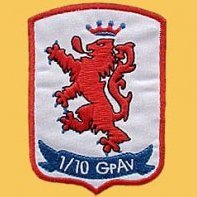

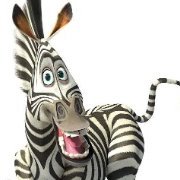

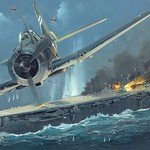

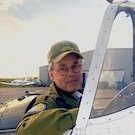




.thumb.jpg.d17ff607fc7e89ed057e63fcb6f2a888.jpg)


